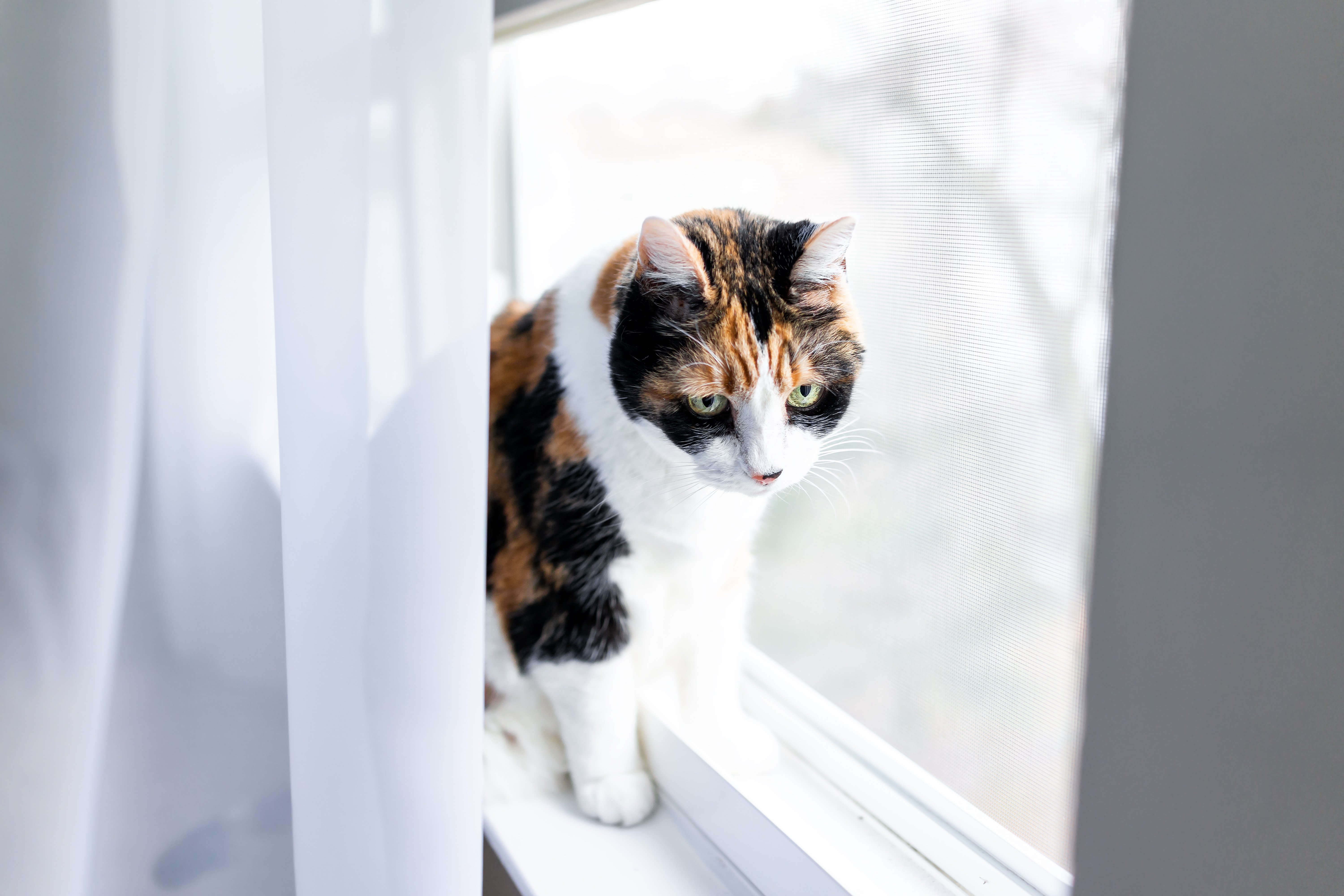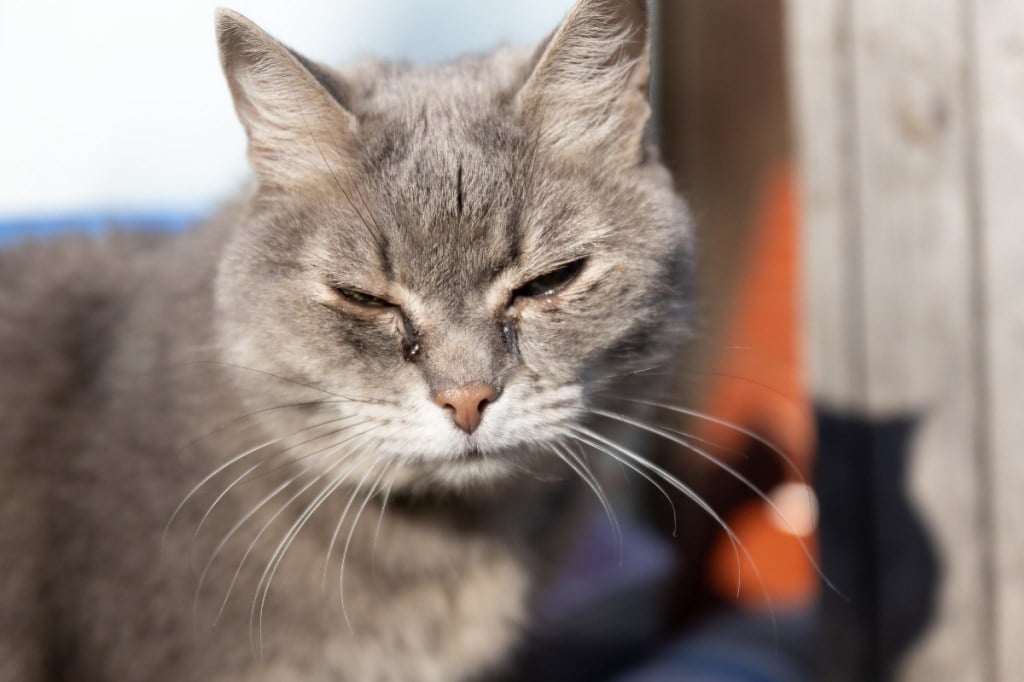Table of Contents
Did you know that cat acne is a completely legitimate veterinary issue? It requires attention and care just like the human version. Here, we’re outlining the common causes of cat acne and describing what it looks like so you can identify it on your own feline. We’re also giving you advice on how to prevent and treat cat acne to ensure your kitty looks and feels their best.
Cat acne is very similar to human acne both in appearance and common triggers. It occurs where sebaceous (oil) glands are located, which for cats are around the mouth, chin, tail, and eyelids. Although glands are found in all these places, cat acne occurs most commonly around the chin and mouth, since this area can be pretty difficult to keep clean. (Think of how much food or water accumulates in this area when eating!)
In terms of what causes cat acne, researchers are still trying to figure everything out exactly (this is also true for human acne). What we do know is that poor grooming and overactive sebaceous glands that block the hair follicles can often lead to acne formation on felines.
Many kitties innately use their paws and tongue to clean themselves. They’ll also rub their faces against objects, which helps to exfoliate and clean. Not every kitty does this enough, though. Sometimes, poor grooming is a result of age and inability to clean as effectively as during the younger years. Stressed or anxious cats are more likely to neglect their self-care, as well.
Cat acne can also be triggered by food allergies, reactions to certain medications, hormonal imbalance, excessive grooming, and rubbing against unclean surfaces. Plastic water and food bowls are a common culprit because bacteria can build up in the scratches and cracks of the plastic, spreading that bacterial contamination to a cat’s chin.
What Cat Acne Looks Like
Like human acne, cat acne ranges from very mild to quite severe. In mild cases, it can simply look like the area is dirty or grayed, but a closer look will reveal tiny blackheads and whiteheads on the surface. This might feel a little itchy or uncomfortable for your kitty, but it’s generally painless. Sometimes mild acne will clear up on its own or remain in that mild stage.
In more aggressive cases, cat acne presents as swollen pustules, bleeding or crusting sores, inflamed or raw skin, boils, and hair loss. This, of course, is quite painful for your kitty. The longer your feline goes without treatment, the worse the problem can become.
How to Treat Cat Acne
Cat acne typically requires lifelong management. Treatment options are primarily topical, but oral medication may be needed for severe cases.
Fortunately, several over-the-counter treatments and at-home DIY remedies can be very helpful for mild cases. For example, you can dip a cotton ball in hydrogen peroxide or witch hazel and then gently dab and wipe it onto the affected area once or twice daily until the acne clears up. Peroxide-based products can be very irritating to the skin, though, so check with your veterinarian first to see if these treatments okay for your individual kitty. If the issue is recurrent, you can repeat as often as needed to keep the area clean.
You can also try using only a warm compress, such as a soft washcloth dampened with warm water, to soothe the skin and calm down the acne.
For a slightly more aggressive at-home treatment option, try something like Pet MD’s Chlorhexidine Antiseptic Dog & Cat Wipes ($19). Veterinarian-prescribed medicated shampoos are also recommended to keep the area clean and treat the acne.
Whichever at-home remedy you choose, do not ‘pop’ your cat’s acne. Doing so will be quite painful for your cat, damage hair follicles, and possibly spread infection. Also, do not use human acne treatments unless your veterinarian directs you to do so.
Advanced cases of feline acne should be addressed promptly by your veterinarian, especially if you suspect your cat is in pain (heads up — cats are notoriously good at concealing pain). Going too long without treatment not only denies your kitty much-needed relief, but also can make the problem worse and can lead to other complications, such as bacterial folliculitis (hair follicle inflammation caused by a bacterial infection) and fungal infections. Your vet will assess the acne, tend to the area in the clinic, and then likely prescribe you a more potent treatment to treat the existing acne, clear the infection, and prevent further outbreaks.
How to Prevent Cat Acne
There are a few approaches to take with prevention. Ultimately, the key is to pinpoint the acne trigger and then eliminate that trigger as swiftly and effectively as you can. For example, if your cat’s acne occurred shortly after switching foods, you may need to switch back to the original food because your cat could be allergic to the new food. If the acne tends to get worse when their food or water bowl hasn’t been cleaned recently, clean the bowls more often. Also, clean your cat’s face after they eat and drink, and consider using ceramic bowls instead.
If your kitty has stopped grooming as frequently or thoroughly, figuring out why (anxiety, age, ailment) and addressing the issue is important. In some cases, you have to step in more frequently to groom your cat.
Whatever the cause and however mild or aggressive the acne, one thing is for sure: your cat will appreciate you helping them find relief.
The content is not intended to be a substitute for professional veterinarian advice, diagnosis, or treatment. Always seek the advice of your veterinarian or other qualified health provider with any questions you may have regarding a medical diagnosis, condition, or treatment options.
Unexpected illnesses run the gamut, but we see the most claims for cats under “skin conditions” and that includes acne! By enrolling in pet insurance, these issues can be covered up to 90% after your deductible. Learn more about Healthy Paws by getting a free quote to help safeguard not just your special fur friend, but your wallet too.







